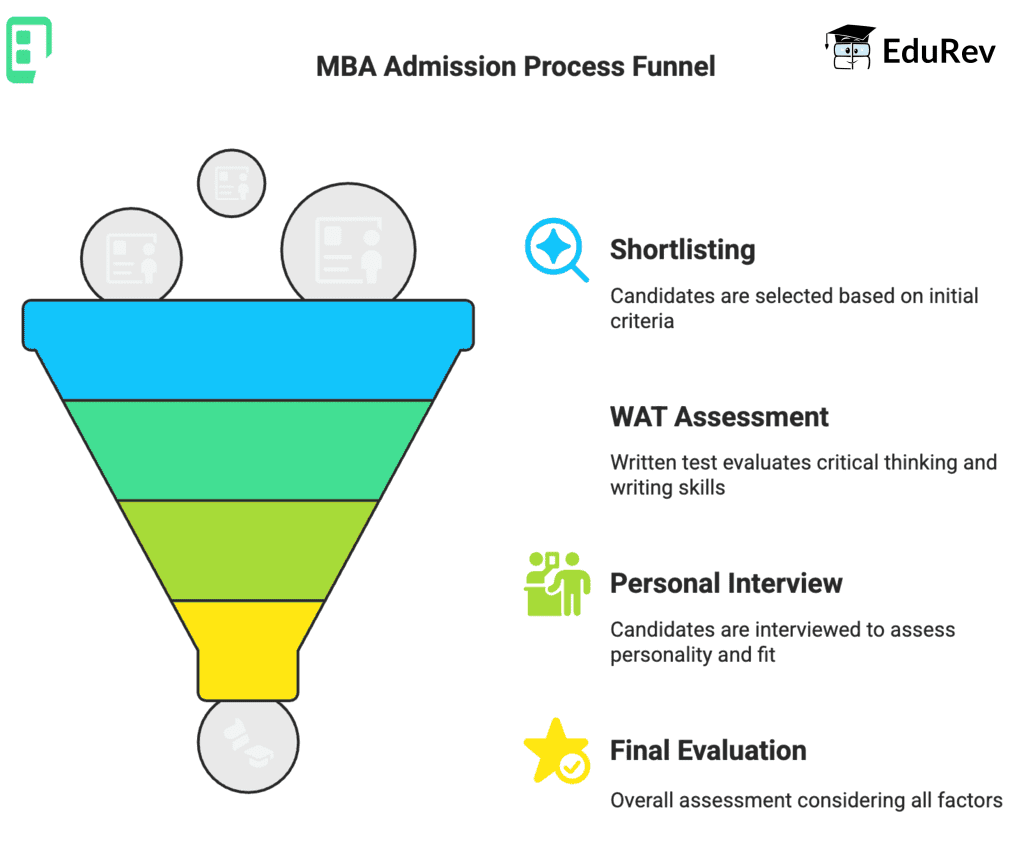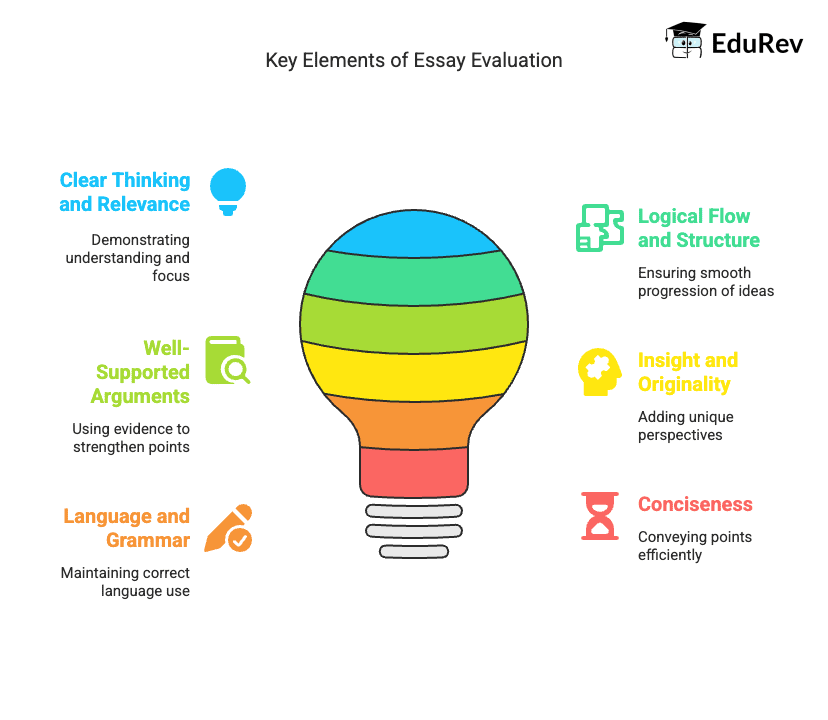How to Ace the WAT: A Practical Guide | CAT Interview Preparation Guide PDF Download
The Written Ability Test (WAT) is a critical component of MBA admissions at IIMs and other top B‑schools. Conducted after shortlisting (often replacing traditional group discussions), the WAT is a 15–30 minute on‑spot essay designed to assess your written communication and critical thinking under pressure. It evaluates clarity of thought and ability to articulate ideas coherently – skills that managers and leaders must possess. In fact, institutes like IIM Ahmedabad explicitly call it the Analytical Writing Test (AWT) and have reintroduced it into their selection process to gain insight into each candidate’s reasoning and writing style.
Weight in admissions: While the exact weight varies by school, the WAT often carries significant influence (roughly 10–20% of the final evaluation, alongside PI and academic profile). For example, IIM Lucknow’s IPMX program assigns 10% to WAT performance.
Why it matters: Unlike group discussions, the WAT spotlights your individual perspective and writing skills. It not only tests content knowledge and awareness of current issues, but also reveals how logically you organise ideas and how well you handle time constraints. A strong WAT essay can impress the admissions committee by demonstrating sharp analytical ability and clear expression.

Structure of a Strong WAT Essay
A coherent structure is essential. Most guides recommend a three-part format:
Introduction (1 paragraph): Briefly introduce the topic and state your thesis or position. Define any key terms if needed, and make your stance clear in the first two or three lines. This immediate clarity shows the evaluator you have a firm grasp of the issue.
Body (2–3 paragraphs): Each paragraph should cover one main point or argument. Support your points with examples, data, or real‑world cases to make them persuasive. Aim for logical flow: for instance, use an Opinion–Logic–Significance (OLS) approach by stating a claim, backing it up with reasoning, and noting its importance. Alternatively, a Problem–Causes–Solution (PCAS) format can work for issues: define the problem, discuss its consequences, analyse causes, then propose a solution. Regardless of style, ensure smooth transitions between paragraphs.
Conclusion (1 paragraph): Summarise your key points and reinforce your main message. Highlight the broader significance or implications of the issue, and end on a confident, forward‑looking note. A concise conclusion (2–4 lines) ties the essay together and leaves a positive impression. Avoid introducing new ideas here.
EduRev Tip: Spend a couple of minutes outlining your essay before you start writing. A quick plan (not more than 25% of your time) helps ensure logical flow and prevents omission of major points.
Ideal Length and Time Management
WAT essays are time‑bound. Typical limits are 15–30 minutes and about 200–400 words. Different IIMs allot different times (e.g. IIM Bangalore: 30 min; IIM Lucknow: 15 min; IIM Ahmedabad: 10 min).
Target length: Aim for 250–300 words. This usually fits within the time and word constraints. Writing fewer or more words is acceptable if you stay within the school’s guidelines, but focus on quality over quantity.
Time allocation: Manage time wisely. Allocate a few minutes to brainstorming (around 10–25% of your time) and the rest to writing and quick proofreading. For example, in a 20‑minute slot, you might spend 4 minutes planning and 16 minutes writing.
Avoid over‑planning: Don’t get stuck on perfecting your outline – or you may run out of time to finish.
Practice under timed conditions: Regularly simulate WAT conditions: pick random topics (current events, abstract ideas, business issues) and write essays within 20–30 minutes. This builds speed and confidence.
Style and Language
Adopt a formal, polished style while remaining clear and concise. Key pointers:
Clarity over flourish: Use simple, direct language. Avoid long, convoluted sentences or unnecessary jargon. Each sentence should add value; if it doesn’t strengthen your argument, cut it.
Formal tone: Write in a neutral, objective tone. Use third-person voice or passive constructions when appropriate. Avoid slang, colloquialisms, and personal anecdotes that don’t add value.
Active voice: Where possible, use active voice for impact (e.g. “The policy failed” rather than “The policy was a failure”).
Transition phrases: Use linking words (however, moreover, therefore, etc.) to connect ideas and guide the reader through your argument.
Grammar and vocabulary: Aim for flawless grammar and varied but precise vocabulary. A rich vocabulary can impress, but do not use big words at the cost of clarity.
Tone balance: Be confident but not abrasive. Phrase criticisms diplomatically. Even if the topic is controversial, present opinions respectfully and back them up logically.
Key Elements Evaluators Look For
When grading your essay, the panel pays attention to several factors:
Clear thinking and relevance: Demonstrate that you understand the topic and stick to it. Address the prompt head-on and avoid irrelevant detours.
Logical flow and structure: A clear introduction-body-conclusion structure with smooth progression is crucial. Each paragraph should follow naturally from the previous one.
Well-supported arguments: Use examples, facts, or real-life scenarios to support your points. Vague or sweeping statements weaken your essay.
Insight and originality: Wherever possible, add a unique perspective or insight. Drawing on personal or professional experiences (where relevant) can make your essay stand out.
Language and grammar: Correct use of language is essential. Check for subject-verb agreement, punctuation, and spelling. Mistakes can distract the reader.
Conciseness: With limited space, every word should count. Focus on conveying your points efficiently. Overly long sentences or paragraphs can lose the reader, so strive for brevity and precision.

Common Mistakes and How to Avoid Them
Avoid these pitfalls to strengthen your WAT:
Poor structure: Writing without an outline often leads to confusion. Essays that lack a clear introduction, logical body, or proper conclusion can leave the reader lost.
Going off-topic: Including irrelevant facts or tangents dilutes your argument. Ensure every paragraph ties back to the topic.
Overgeneralization: Making broad claims without evidence weakens credibility (e.g. saying “All experts agree” with no proof).
Ignoring the conclusion: A missing or weak conclusion leaves the essay unfinished and forgettable.
Poor grammar/spelling: Even strong content will suffer if riddled with errors.
Excessive verbosity or slang: Writing flowery phrases or casual language can backfire.
Lack of examples: Abstract arguments without examples feel hollow.
Poor time management: Getting bogged down on the intro or one idea can cost you finishing time.
Handling Different Topic Types
WAT prompts fall into broad categories – current affairs, abstract/philosophical, and opinion/debate. Adapting your approach to each type is key:
Current Affairs: These topics (e.g. economic policies, international events) require accuracy. Ensure your facts are up to date and correct. Structure your essay with a clear background if needed, then analyse the issue’s pros and cons. Use concrete examples or data (e.g. recent news, studies). Stay neutral or present balanced views if the topic is contentious, unless clearly asked for your opinion.
Abstract/Philosophical: These prompts present a concept or proverb (e.g. “Success is a journey, not a destination”). The goal is to interpret creatively. Consider multiple angles: define the concept in your own words, give analogies or metaphors, and relate it to real-life situations. Often, it helps to take a clear stance (agree/disagree) and support it with examples. Brainstorm frameworks like PESTEL (Political, Economic, Social, etc.) or the “voice of affected parties” to cover diverse points.
Opinion/Argumentative: In these topics (e.g. “Online classes vs. offline classes”), explicitly state your position in the introduction. Then discuss logical reasons for your stance, backed with examples. Use contrast (e.g. pros vs. cons), highlight implications, and address possible counterpoints. Conclude by reinforcing your viewpoint.
|
21 videos|18 docs
|
FAQs on How to Ace the WAT: A Practical Guide - CAT Interview Preparation Guide
| 1. What is the ideal length for a WAT essay? |  |
| 2. How much time should I allocate for writing a WAT essay? |  |
| 3. What style and language are recommended for a strong WAT essay? |  |
| 4. What key elements do evaluators look for in a WAT essay? |  |
| 5. What are some common mistakes to avoid when writing a WAT essay? |  |
















